Littering might appear to be a minor issue, but the impact of litter can be profoundly detrimental to wildlife in Alamo.
The various types of litter—ranging from plastic debris to food wrappers—present significant risks to local ecosystems.
This article delves into how litter disrupts the natural balance, endangers animals, and introduces harmful chemicals into their habitats.
Additionally, it highlights the importance of community initiatives and individual actions in reducing litter and safeguarding the wildlife we hold dear.
Engage with us as we uncover the truth about the impact of litter and explore ways you can contribute to making a positive difference.
The Impact of Litter on Alamo’s Wildlife
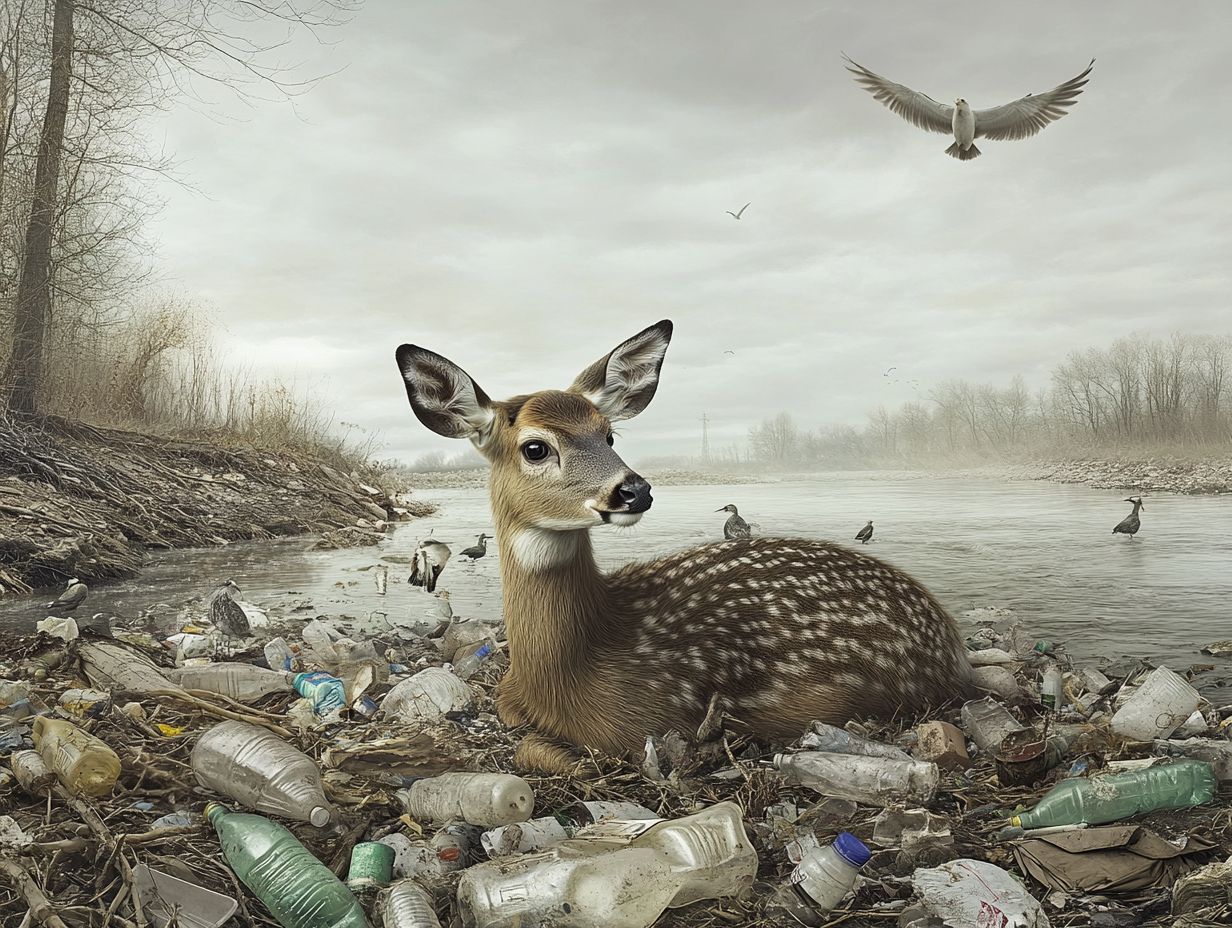
Littering represents a considerable threat to the wildlife in Alamo, impacting a range of species along with their natural habitats.
The harmful effects are evident in animals such as seabirds and whales, which may accidentally ingest dangerous plastics like soda cans, fishing lines, and plastic bags.
Moreover, the presence of discarded items not only harms individual animals but also disrupts the delicate balance of the ecosystem as a whole.
In California, various organizations and local government bodies have launched campaigns aimed at raising public awareness about the importance of litter prevention for wildlife safety.
They are actively encouraging community involvement in cleanup efforts to address these pressing environmental issues.
Types of Litter Found in Alamo
Alamo is regrettably affected by various types of litter that not only detract from the natural beauty of the environment but also pose significant risks to local wildlife.
Commonly encountered items include a variety of discarded materials such as soda cans, plastic bottles, fishing lines, and beer cans, which tend to accumulate in parks, along roadways, and near bodies of water.
The sharp edges of tin cans and the harmful effects of plastic bags can create hazardous situations for animals that might unwittingly come into contact with this litter.
Recognizing the types of litter prevalent in Alamo is essential for developing effective litter prevention strategies aimed at protecting wildlife and their habitats.
Commonly Littered Items
In Alamo, it is not uncommon to see certain items littering public spaces, and this has significant implications for local wildlife and the environment.
Among the most frequently discarded items are soda cans and plastic bottles, which often find their way into parks and waterways.
The consequences of such littering extend far beyond mere aesthetics.
Wildlife may inadvertently mistake these items for food, resulting in severe health issues such as choking or poisoning.
A particularly concerning incident involved a local bird that required rescue after ingesting a bottle cap, which obstructed its digestive tract.
Fishing line is especially dangerous, posing serious entanglement risks to animals.
Similarly, beer cans and soda rings can lead to ingestion complications.
The presence of tin cans and plastic bags adds to the pollution problem, contributing to environmental degradation and adversely affecting ecosystems.
To combat these challenges, community initiatives such as clean-up drives and educational programs are essential for fostering awareness and driving meaningful change.
Collaborating with schools and local organizations can enhance this effort, promoting a shared commitment to reducing litter and safeguarding the natural beauty of Alamo.
Impact of Litter on Local Wildlife
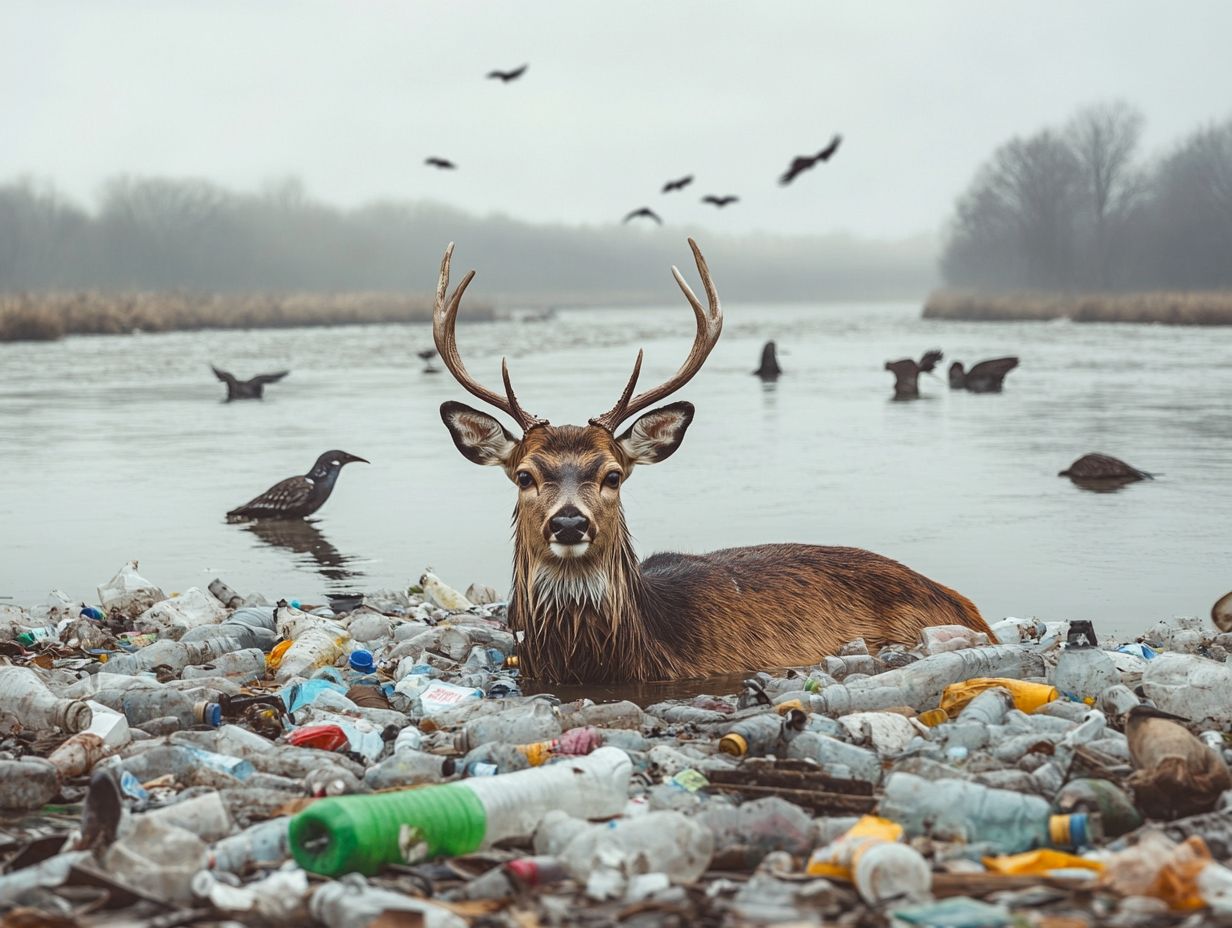
The impact of litter on local wildlife in Alamo is quite concerning, as numerous species face significant threats from pollution caused by discarded materials.
Animals, especially seabirds and marine mammals like whales, are at risk of ingesting harmful substances such as plastics and metals found in litter, which can result in serious injuries or even death.
Additionally, litter can disrupt natural habitats and breeding grounds, forcing wildlife to adapt in precarious ways.
By understanding these impacts, we can enhance our wildlife protection efforts and advocate for stricter littering regulations within our community.
Recent studies have established a clear connection between litter and increased morbidity rates in wildlife, with seabirds often found entangled in plastic nets and dolphins affected by debris from boats.
Environmental experts emphasize the need for educational initiatives, recommending that local schools adopt programs that highlight the importance of waste reduction.
Furthermore, local government bodies can take the lead by launching campaigns that not only stress the importance of litter laws but also promote responsible disposal practices.
Such actions can give the power to residents to make informed decisions, ultimately fostering a culture of conservation and protecting Alamo’s diverse ecosystems.
Impact of Litter on the Ecosystem
Littering has significant effects on the ecosystem, influencing various aspects such as soil quality, water clarity, and biodiversity.
When items like plastic bags and soda cans are carelessly thrown away, they not only contribute to environmental pollution but also introduce harmful chemicals into the soil and waterways.
This pollution disrupts the natural balance of ecosystems, resulting in a decline in local species and negatively affecting the overall health of wildlife populations.
Understanding these impacts is crucial, as they underscore the importance of conservation efforts and the need for proactive measures to address littering.
Disruption of Natural Balance
The disruption of the natural balance brought on by littering can lead to serious consequences for ecosystems and the wildlife that depend on them.
Pollution from litter can disrupt food chains, diminish available habitats, and create toxic environments for various species.
For example, when plastic waste infiltrates aquatic ecosystems, it can result in the death of fish and other marine animals, thereby impacting biodiversity and the overall health of the ecosystem.
Hence, it is crucial to understand how litter affects these natural dynamics to effectively protect wildlife and promote environmental conservation.
Research shows that microplastics frequently confuse filter-feeding animals, such as bivalves, which mistake them for food.
This leads to ingestion and can cause health issues for these creatures.
In coastal regions, the accumulation of litter can smother coral reefs, contributing to their decline and negatively impacting numerous marine species that rely on these habitats.
Experts highlight the importance of community involvement in addressing this issue.
Community clean-up initiatives not only help to remove litter but also raise awareness about sustainable practices.
Engaging local residents in dialogue and education can give the power to them to take action, significantly reducing the amount of waste that enters ecosystems and ultimately fostering healthier environments for wildlife.
Harmful Chemicals and Toxins
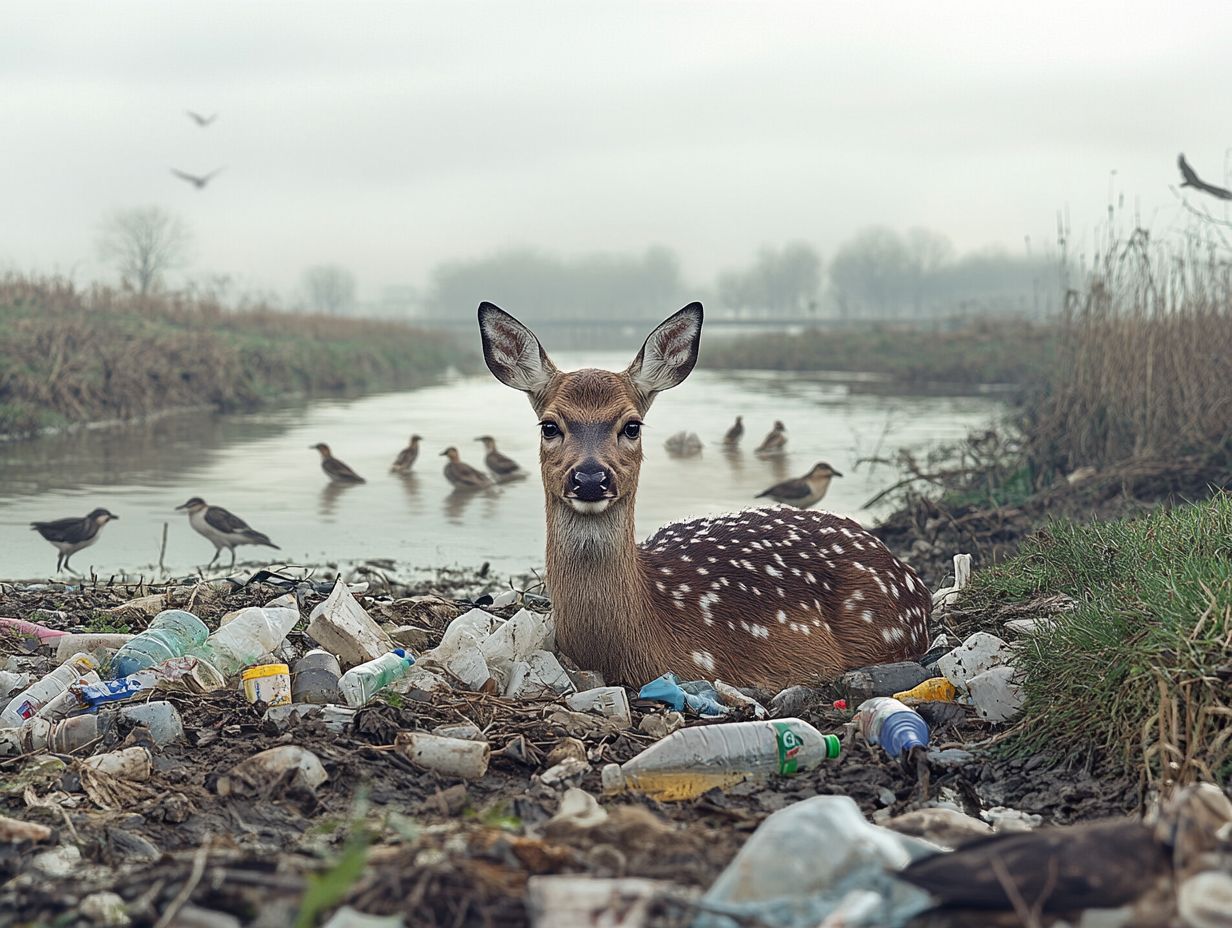
Litter often contains harmful chemicals and toxins that leach into the environment, posing significant threats to wildlife and ecosystems.
For example, substances found in items like plastic bottles and batteries can contaminate soil and water, which can adversely affect the health of both terrestrial and aquatic organisms.
This type of pollution not only harms individual animals but can also disrupt entire food chains and ecosystems, leading to long-term environmental consequences.
Recognizing the dangers posed by these harmful substances is crucial for promoting wildlife protection and encouraging responsible litter management.
Research shows that chemicals such as heavy metals, BPA, and phthalates, commonly linked to litter, can result in various health issues in animals, including reproductive problems and neurological disorders.
For instance, studies have indicated that runoff containing these toxins significantly reduces fish populations in affected waterways.
Additionally, microplastics are an increasing concern; they not only degrade water quality but also enter the food chain, potentially risking human health through seafood consumption.
To effectively reduce litter and its associated toxic substances, mitigation strategies such as increased public awareness campaigns, community clean-up initiatives, and stricter regulations on waste disposal can play a pivotal role in fostering healthier ecosystems.
Ways to Reduce Litter in Alamo
Reducing litter in Alamo necessitates a collaborative effort from the community, effective recycling practices, and continuous advocacy for litter prevention initiatives.
Community clean-up events provide residents with an opportunity to unite and actively engage in preserving their environment, all while increasing awareness about the significance of proper trash disposal.
By educating individuals on recycling practices and encouraging the use of reusable bags, it is possible to greatly diminish the amount of litter that accumulates in local parks and waterways.
Cultivating a culture of community action is vital for creating an environment where litter is not accepted.
Community Clean-Up Efforts
Community clean-up efforts are essential in addressing the litter problem in Alamo, as they bring residents together to improve their environment and instill a sense of responsibility.
These events not only facilitate the physical removal of litter but also serve as a valuable opportunity to raise public awareness about the environmental consequences of littering and the significance of collective action.
Involving local schools, organizations, and businesses in these initiatives can enhance their impact and foster a culture of litter prevention that resonates throughout the community.
The success of these clean-up initiatives is evident in the collaboration among various local entities, all working towards the common goal of a cleaner Alamo.
Recent events organized by community groups have not only mobilized volunteers but also highlighted the positive effects of teamwork.
To encourage broader participation, organizers might consider introducing incentives, such as recognition programs for the most dedicated contributors or partnerships with local businesses offering discounts in exchange for volunteer hours.
Additionally, establishing a continuous maintenance strategy that includes regular litter monitoring and educational workshops will help sustain these efforts, ensuring that the community remains engaged and informed well beyond the clean-up days.
Proper Disposal and Recycling Practices
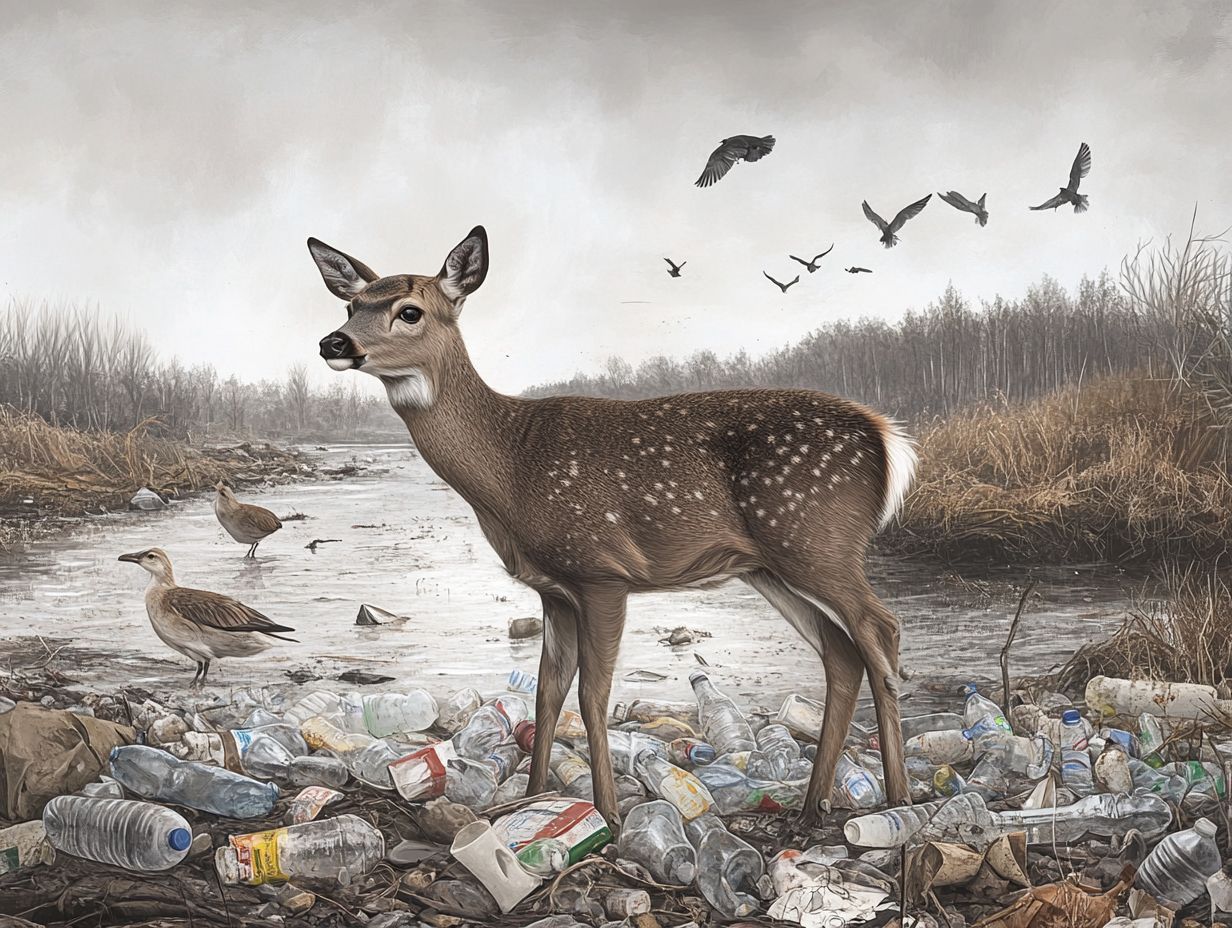
Proper disposal and recycling practices are essential elements of litter prevention efforts in Alamo, ensuring that waste is managed in an effective and responsible manner.
Educating the public on how to properly dispose of items such as soda cans and plastic bottles can significantly decrease the amount of litter that finds its way into the environment.
Promoting recycling initiatives diverts waste from landfills and encourages a more sustainable approach to waste management.
Advocating for these practices can lead to a lasting positive impact on the local ecosystem and wildlife.
Residents can play a vital role in enhancing these efforts by participating in local recycling programs, which offer convenient drop-off locations and collection services for recyclable materials, including paper, glass, and metals.
It’s essential to understand what can and cannot be recycled; for instance, items contaminated with food waste are often unsuitable for processing.
The existing recycling programs in Alamo have achieved incremental successes, but there is a need for more robust policies to increase participation and improve efficiency.
By advocating for better waste management policies, community members can contribute to a cleaner environment, promote sustainability, and inspire future generations to take responsible actions.
Impact of Litter & Individual Actions on Alamo’s Wildlife
The impact of individual actions on Alamo’s wildlife is significant, as everyday choices can greatly influence the levels of litter and pollution in the environment.
When residents opt to litter or fail to dispose of waste properly, they contribute to a cycle of pollution that directly harms the local wildlife.
On the other hand, responsible actions—such as participating in clean-up efforts, recycling, and advocating for litter prevention—can foster a positive ripple effect throughout the community.
By embracing personal responsibility, individuals can play a vital role in protecting the wildlife and preserving the natural beauty of Alamo.
Small Changes, Big Difference
Small changes in individual behavior can significantly impact the fight against littering and its detrimental effects on wildlife.
Simple actions, such as opting for reusable bags instead of plastic, disposing of litter properly, and participating in local clean-up events, can greatly reduce litter in Alamo.
By making mindful choices about waste management and actively engaging in community activities, individuals can play a vital role in preserving their local environment and protecting wildlife from pollution.
Community initiatives like the ‘Adopt-a-Spot’ program have effectively encouraged residents to take ownership of specific areas, fostering a sense of pride and ensuring those spots remain clean and free of litter.
Additionally, by inviting neighbors to reduce their waste footprint through friendly competitions—such as who can collect the most litter in a month—local organizations have strengthened community bonds while instilling a sense of purpose among participants.
When groups come together, the impact is magnified, creating a supportive environment where individuals can motivate and inspire one another to continue making those small yet meaningful lifestyle changes.
